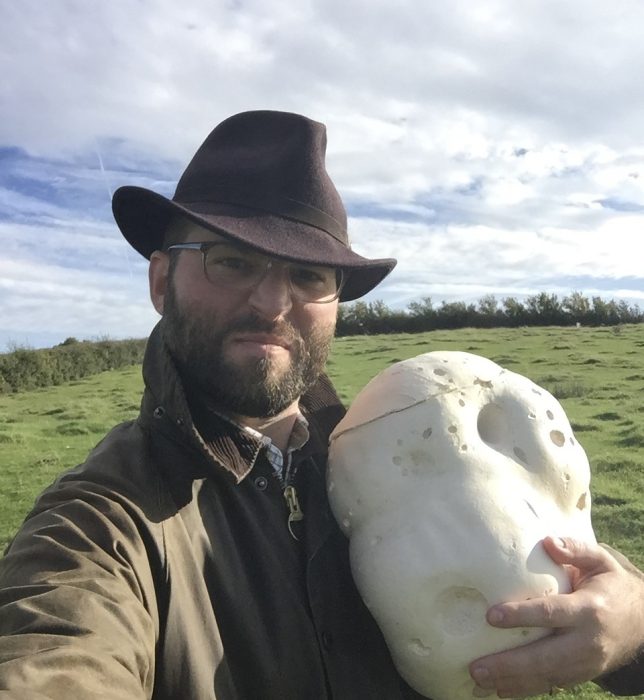
By Sebastian Morello
Ever since the 1st Century Roman general St Eustace, while out hunting with his hounds, witnessed the miraculous vision of a great stag with a crucifix poised between its antlers, there has been a deep relationship between Europe’s religion and the pursuit of quarry.
Indeed, six centuries later, the Duke of Aquitaine’s eldest son, Hubert, was granted a similar vision (which, incidentally, became the inspiration behind the logo of the German digestif Jägermeister). Thereafter, Hubert became bishop of Ardennes in the Lowlands of northern Europe and was eventually named patron saint of hunting by the Church Universal. The monks of St Hubert in what is now the Kingdom of Belgium bred the famous St Hubert hound, from which Britain’s foxhounds, bloodhounds, beagles, harriers, and hunting bassets are partly descended.
According to the religion which Bishop Hubert of Ardennes preached, divine grace enters nature from without and transforms it from within in order to sanctify it. To the degree we fly from nature, we retreat from the arena where grace can operate and lead what God has made to its proper finality. Take note: there is no grace in the Metaverse. Thus, the Christian is a natural outdoorsman.
I learned this truth as a schoolboy, when a friend and I would often escape from our boarding school by going up to Shropshire on the weekends to follow a pack of beagles for which he—my friend—was a whipper-in. This friend of mine came from a long line of persecuted, recusant Catholics. Having enjoyed a field-sporting day, we’d retire to his ancestral home in whose drawing room his father would leave bottles of damson gin to banish the chill from our bones. We drank the syrupy liqueur and smoked roll-up cigarettes in that beautifully arranged room, discussing the day’s chase. My chum was the only Roman Catholic I knew, and he didn’t only help to plant a seed that would grow into my conversion to his faith years later, but he also fostered in me what became a love of hound-work.
Recently, whilst out hunting, I discussed these fond memories among other things with a pal who had joined the field for the day—as it happens, this chum I credit with getting me back into hunting after a regrettable interlude. The chase, of course, effects a tremendous thirst, which in my view is only properly satiated by old English ale. Fortunately, that day’s hunt took place a stone’s throw from my favourite brewery: the Chiltern Brewery.
I’m a traditionalist in all things, and that includes my beer preferences. Fortunately, the Chiltern Brewery specialises in traditional ale brewed using traditional methods. You will find none of that inexplicably popular, urine-coloured, over-hopped, carbonated, sour, American-style, hipster battery-acid at the Chiltern Brewery. Rather, this family-run business excels in brewing rich, malty, lightly hopped, old ales that one could well imagine being served in pewter mugs at the 111th birthday party of Bilbo Baggins.
Located on a working farm in the heart of the Chilterns, the brewery was founded in 1980 by Richard and Lesley Jenkinson, and is now run by their sons, George and Tom. According to the family, the brewery was founded ‘to produce natural, wholesome beers using the best, class A malt and hops sourced in England,’ adding that they opt for ‘age-old methods’ by which their ‘beers are brewed with skill, passion, and integrity.’
Certainly, their most popular beer is their traditional ale, Beechwood Best Bitter. This was their first ale, and the recipe hasn’t changed in forty years: Maris Otter and Crystal malts that give it its amber colour and nutty base, as well as Challenger, Fuggles and Goldings hops, creating a delightful toffee aroma with a fruity finish. The Monument Pale Ale, combining honeyed malts with the light citrus of British Cascade hops, makes for an excellent summer session beer. My favourite of those available in the bottle, however, is the Three Hundreds Dark Old Ale, a truly satisfying, rich, heavy beer with a long, pleasing finish.
On draught, besides their ever-popular Beechwood Best Bitter and their pale ale, one will find the excellent Chiltern Black, a perfect all year-round old-style English porter with a toffee-ish taste, hints of roast barley, and being gently hopped, culminates in a long, chocolaty finish. The Chiltern Ruby is a wonderful, full-bodied ale which, for some opaque reason, drinks very well in autumn, and marks an experience not unlike eating a fruitcake. The Chiltern Ruby ale was the result of a collaboration between the brewery and the good chaps at the Campaign for Real Ale, and it has become extremely popular.
My uttermost favourite beer from the Chiltern Brewery, however, is their Christmas seasonal ale, Festive Foxtrot. This beer, the perfect winter-warmer, evoking all those smells and spices of Christmas, and arriving right in the middle of the hunting Season, is really as good as English ale gets.
My fellow hunt-follower and I arrived at the brewery and drove through its gates, under an arch upon which is emblazoned the brewery’s motto: ‘Fear God and give Him the Glory!’ St Hubert would certainly approve. This dictum is found on all the brewery’s bottles, kegs, and even on their beautiful tankards which can be bought at the brewery shop. These words are usually also inscribed just below the brewery logo, which is an image of a fox with a very full brush standing in front of a beech tree.
As it happens, one can only purchase beer at the brewery to take away as they don’t have a working bar. Thankfully, there is a splendid pub half a mile down the road in which Chiltern ale is the only ale on offer, and where the food is good too, and so my companion and I were duly directed to this old-fashioned tavern where we drank, ate, and made merry in honour of St Hubert and his happy collaborator, St Arnold of Soissons … patron saint of brewers!
Sebastian Morello is a lecturer, public speaker, and columnist. Trained by Sir Roger Scruton, he has published books on philosophy, history, and education. He lives in Bedfordshire, England, with his wife and children. He is essays editor of The European Conservative. The picture of him at the head of this article shows him with a Giant Puffball Mushroom that he foraged—or strictly speaking, ‘hunted’—from the field behind his home. That single mushroom fed him and his family for nearly a whole week




